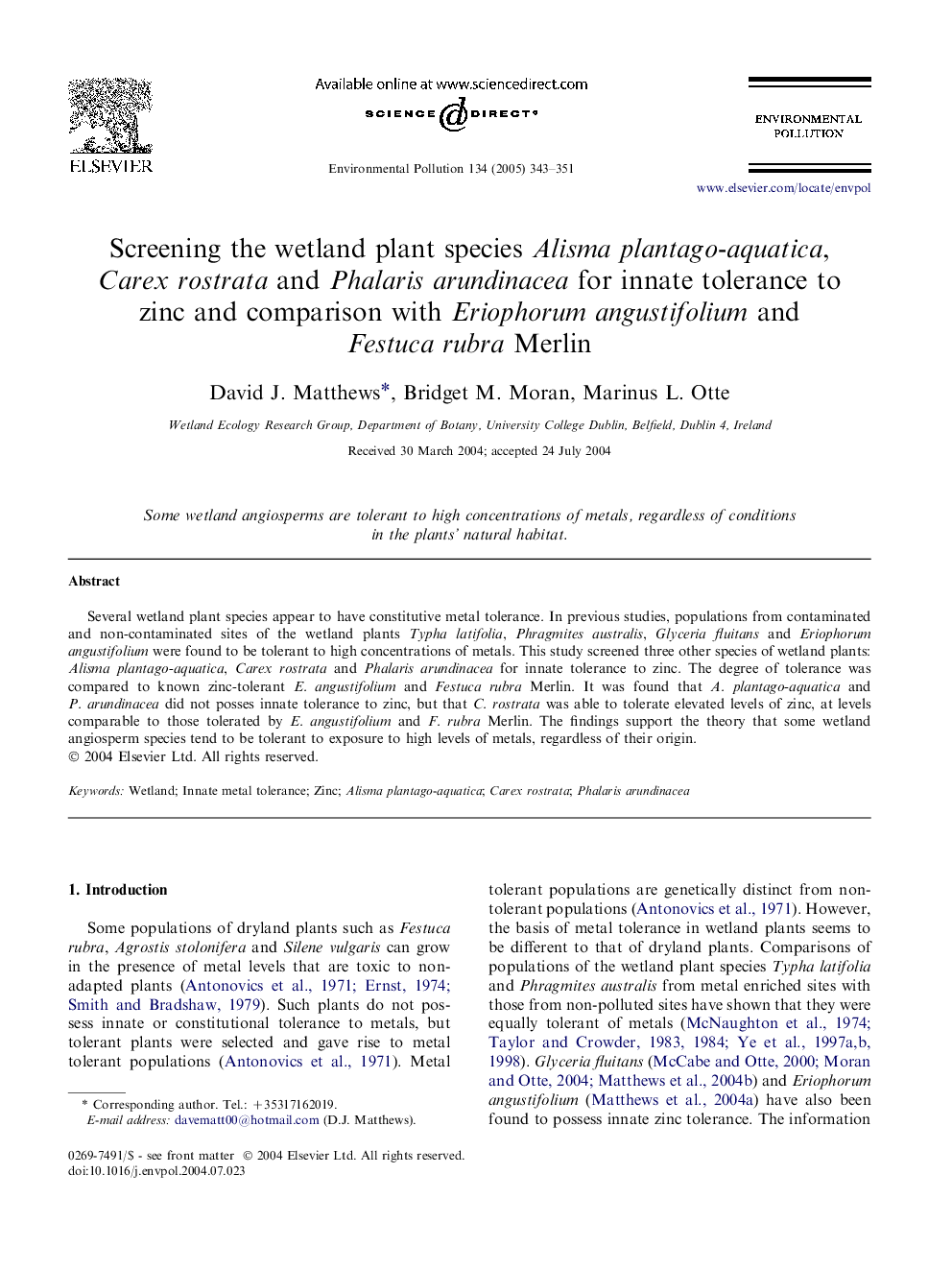| Article ID | Journal | Published Year | Pages | File Type |
|---|---|---|---|---|
| 9456583 | Environmental Pollution | 2005 | 9 Pages |
Abstract
Several wetland plant species appear to have constitutive metal tolerance. In previous studies, populations from contaminated and non-contaminated sites of the wetland plants Typha latifolia, Phragmites australis, Glyceria fluitans and Eriophorum angustifolium were found to be tolerant to high concentrations of metals. This study screened three other species of wetland plants: Alisma plantago-aquatica, Carex rostrata and Phalaris arundinacea for innate tolerance to zinc. The degree of tolerance was compared to known zinc-tolerant E. angustifolium and Festuca rubra Merlin. It was found that A. plantago-aquatica and P. arundinacea did not posses innate tolerance to zinc, but that C. rostrata was able to tolerate elevated levels of zinc, at levels comparable to those tolerated by E. angustifolium and F. rubra Merlin. The findings support the theory that some wetland angiosperm species tend to be tolerant to exposure to high levels of metals, regardless of their origin.
Keywords
Related Topics
Life Sciences
Environmental Science
Environmental Chemistry
Authors
David J. Matthews, Bridget M. Moran, Marinus L. Otte,
